
Curator’s statement
Prague, Vienna and Budapest are three of the most beautiful and historic cities in Europe. They offer a unique blend of old world charm and modern culture, making them a special destination for travel. Off-the-beaten path of the main European tourist destinations, these cities provide an authentic experience while still being able to experience history (old and recent), beautiful architecture and great museums.
The Fora Difference
Book with Alyssa to access exclusive perks and experiences on your trip.
Killer perks
Free upgrades, spa credits and more—we got you
Personalized recs
Customized travel planning for your style
Insider knowledge
Expert advice from people who’ve actually been there
Where to stay
Unlock perks by contacting Alyssa to book your trip.
Day 1: Arrive in Prague
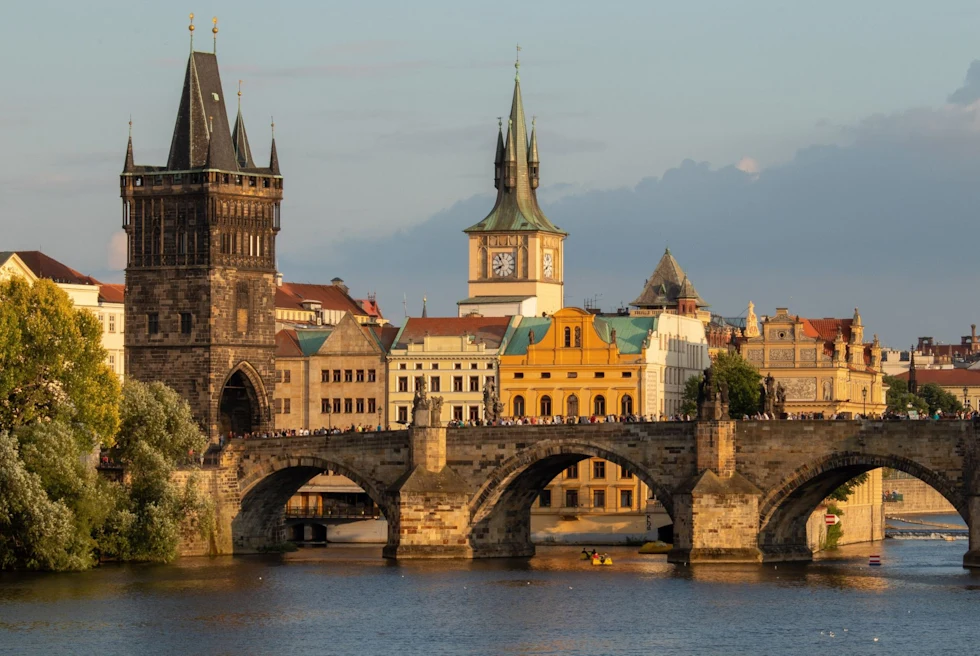
Morning: Self Guided Visit to Prague’s Old Town
Bust through your jet lag with a lovely stroll through old town. A visit to Old Town (Staré Mesto) transports you to an entirely different era. A labyrinth of twisting cobblestone lanes and alleys surrounds Old Town Square, which has been Prague’s municipal center since the Middle Ages. The square is lined by magnificent churches and imposing Renaissance palaces, but the most famous site in the Old Town is the Gothic Old Town Hall. Its famed Astronomical Clock usually draws large crowds at the turn of each hour, as a parade of apostles, many of whom carry the instruments of their martyrdom and other 1gures proceed from the clock.
The main tow of pedestrian traffic follows along the old Royal Route, which goes from Celetná Street over Old Town Square through Karlova Street to the Charles Bridge. The architecture on this route is certainly well worth seeing. Keep in mind that most buildings were modified over the centuries and incorporate a range of historical influences and architectural styles. For example, what appears from the facade to be a Baroque era building may have a Gothic structure and an interior decorated with Renaissance carvings.
Afternoon: Self Guided Tour of Prague’s New Town
In the New Town, you will find a great variety of shops, restaurants, nightspots and pubs, as well as churches, cultural sites and museums, such as the Museum of Communism and the Mucha Museum. This is also a great location for shopping and exploring some of the cities most In the Lucerna shopping gallery located between Wenceslas Square, Štepánská street and Vodickova street, you can see a very interesting if somewhat disturbing equestrian statue hanging from the glass-domed ceiling. Branching off from the end of Wenceslas Square is Na Príkope street, which is another wide commercial street with some of Prague’s most expensive commercial real estate. The Kotva shopping center, which was once the best shopping center in all of Communist Czechoslovakia. While it has been updated, you can still feel a bit of the Iron Curtain atmosphere.
You can catch tram #22 at the stops Národni divadlo, Národní trída, or Lazarská. Both directions of travel are scenic. When you are ready to head back, you can just get off and get back on a tram going the opposite direction.
Day 2: Prague
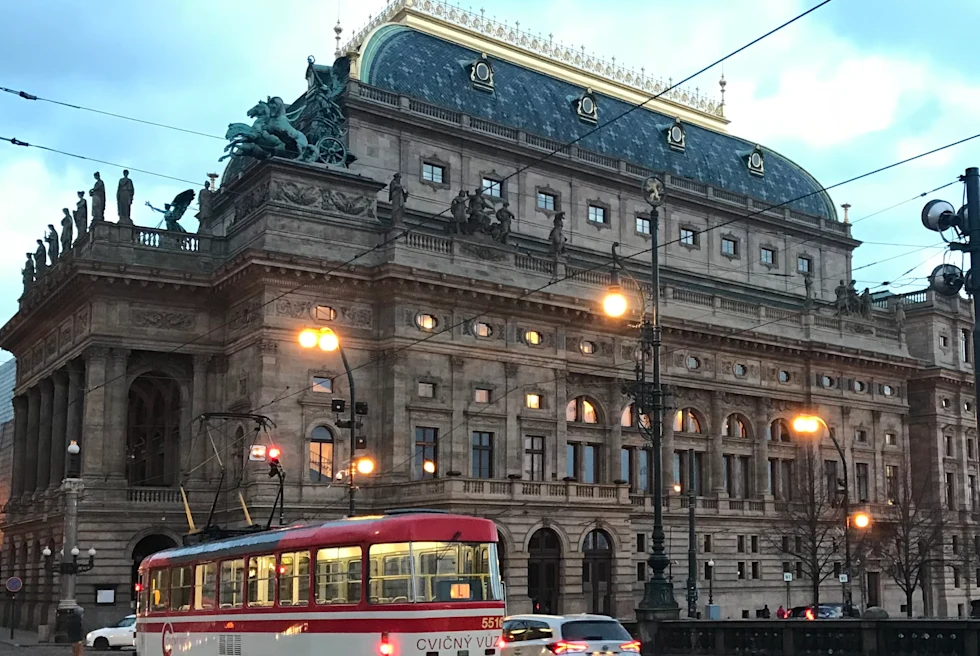
Walking Tour of the Royal Route and Prague Castle
Take a walking tour to explore the Prague Castle, the largest castle complex
in all of Europe, walking through the Royal route and crossing the Charles Bridge. You will pass through the enchanting Little Quarter, and take a tram up the hill to the nearly eleven hundred-year-old Prague Castle. If you choose, you can also walk up to the castle. Tour through the castle courtyards and into the dramatic St. Vitus Cathedral in the center of the castle complex. You can find a spectacular panoramic view of the city of a hundred spires. Hidden away in the northeastern corner of the castle you will find the tiny Golden Lane. The humble but delightfully charming cottages which line the lane once housed guards, goldsmiths and other diverse residents, including for a brief period the writer Franz Kafka. The cottages offer a wonderful contrast with the grand palaces and churches which cover most of the castle complex. While entry onto the street is usually ticketed, you can visit for free if you are there in the early morning or evening.
Before leaving the castle behind, make sure to check out the palace gardens just below the castle, accessible near the entrances of both ends of the castle.
Day 3: Prague
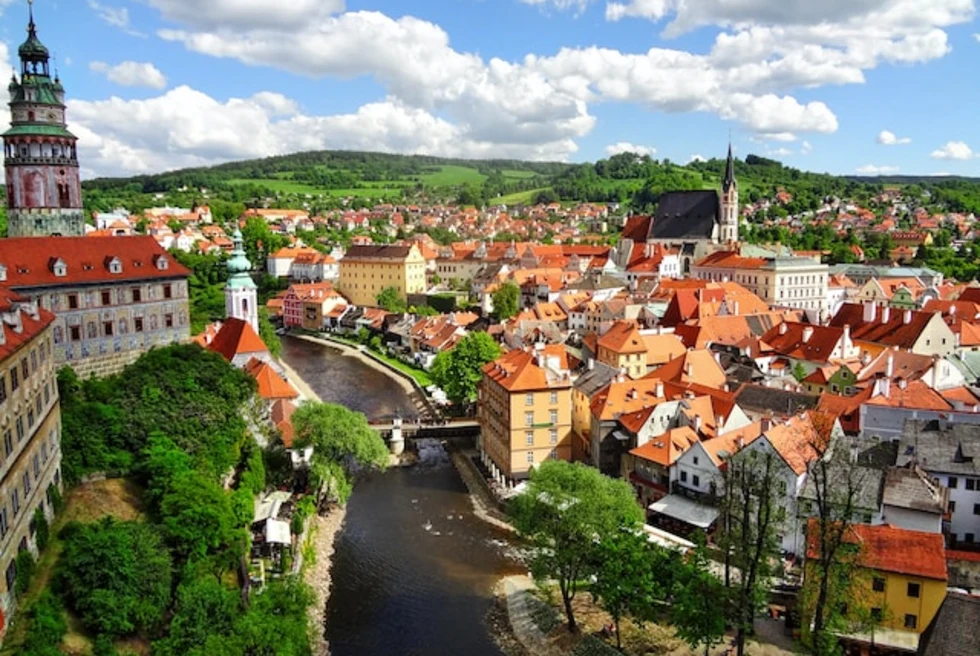
Morning: A Foodie’s Walking tour of Prague
One of my favorite things to do in a city is find the authentic food! It is a great way to learn about the culture and the people! This tour explores the burgeoning gastronomical scene of Prague, from regional Czech farm products to delicious smoked meats and delectable cheeses of Central and greater Europe, from intimate cafés with freshly roasted beans to wines from one of the elegant vineyards within the city limits. It will change daily, depending on your interests and the changing locations of the outdoor markets. Come along and thrill your palate!
Important note: The food and wine are not included in the cost. As an estimate, you can budget about $25-$50 per person, but how much you spend will depend on your appetite, preferences and wine choices.
Early Afternoon: Self-Guided Tour of the Old Jewish Quarter
Some of Prague’s earliest residents were Jewish, and their long history in the city endows it with a rich heritage of Jewish culture. In fact, evidence of Jews living in Prague stretches back to 970 AD, when the city was still in its infancy. Medieval church prohibitions against money-lending resulted in the Jews playing an important role in enhancing Bohemian kings and nobility and thus an important role in the city’s economy.
If you would like to take a visit to see the architecture or immerse yourself in the long, complex history of the Prague Jewish community, this si a must see. Visit the Jewish Cemetery and Pinkas Synagogue. This is the must-see attraction in the Jewish Quarter. The multitude of headstones and the elevated ground created by countless burials are truly an amazing sight. At the entrance to the cemetery is Pinkas synagogue, which is now a memorial to Holocaust victims. You will also see a heartbreaking exhibit of children’s artwork from the nearby Terezín concentration camp.
Old-New Synagogue is the oldest and most fascinating of the synagogues.
When built in 1270 it was known as the New Synagogue because there was one older synagogue. but over the centuries other synagogues were built so it became quite old for a “New” Synagogue - hence the name. The attic of the synagogue is also reputedly the storage place of the Golem created by the renowned Rabbi Judah Loew Ben Bezalel. A Golem is an anthropomorphic being, magically created from inanimate matter. According to legend, the rabbi created the Golem out of clay from the River Vltava and used him to defend Prague’s Jews from a pogrom.
Day 4: Prague to Vienna
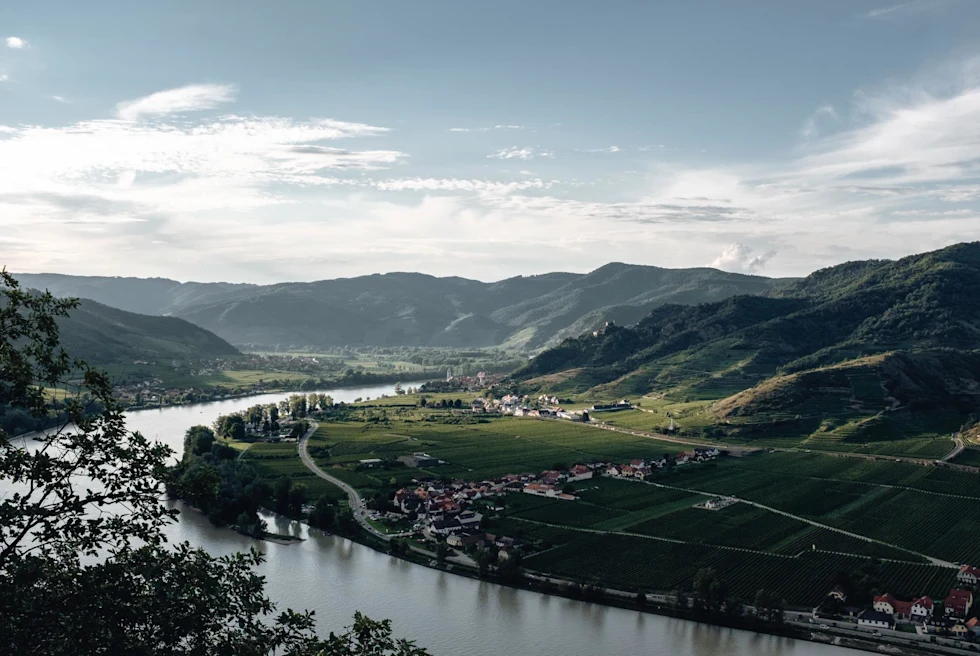
Rail Journey from Prague to Vienna
The scenic journey to Vienna should take about 4 hours and 45 minutes. After departing Prague, you will 1rst pass through the rolling countryside of central Bohemia. As you enter Vienna, you will pass over a series of islands, forest and canals as you cross the Danube River
Guided Walk through Vienna’s Inner City
This tour takes you back in history to explore the Vienna that stood within the old city walls. You will learn about the humble beginnings of Vienna before it became a city of rich merchants and a cultural center which attracted minstrels and principal builders. You will pass by the The magnificent Cathedral of St. Stephen’s is a particularly glorious testament to hundreds of years of history, as its construction stretched over centuries. You will also see many of the beautiful Baroque churches and palaces which were built in the 17th and 18th centuries, as well as architectural gems from the 19th century.
Evening Self Guided Visit to Vienna’s Inner City (Innere Stadt)
When the Viennese say they are going “into the city”, they are talking about the Inner City (Innere Stadt). The Inner City corresponds to Vienna’s original medieval city, which was once surrounded by defensive walls that stood where the Ringstrasse now runs. A warren of medieval alleyways crowded into the protected space between the walls, creating a dense network of pedestrian streets that remains to this day. Day or night, the Inner City draws the Viennese to it, making it the true center of Vienna. With so much to offer, you will see why many tourists never make it out of the Inner City.
Day 5: Vienna
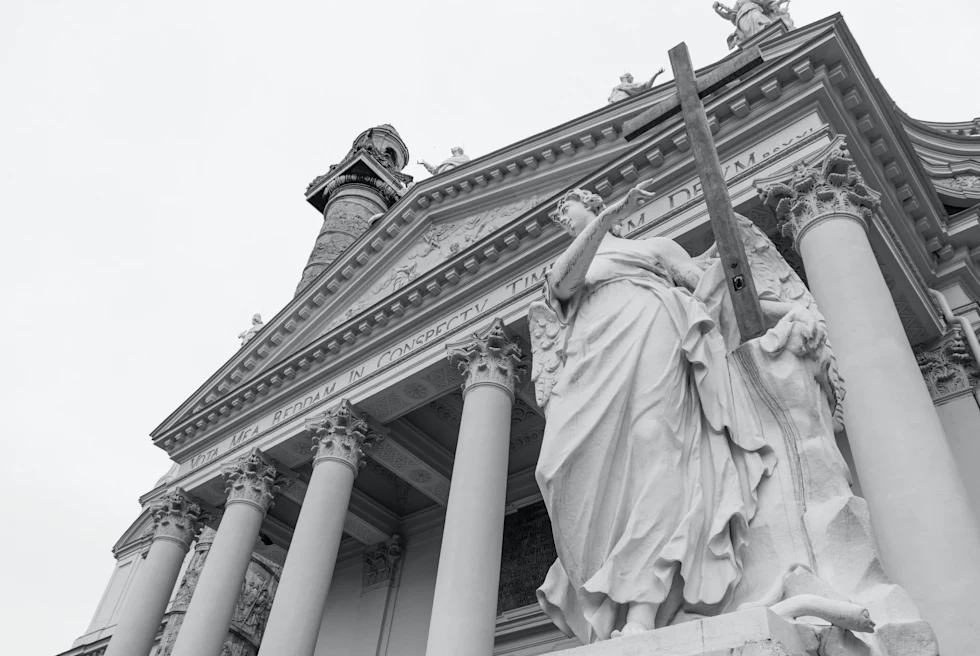
Morning Hip Vienna: Self Guided visit to the Naschmarkt and Museum Quarter
The Naschmarkt and its surroundings are a great destination for those who love shopping, art, cafes and nightlife. With a population of students and young professionals, this area is one of Vienna’s youngest, and not coincidentally, it’s most hip and bohemian. The Naschmarkt is a long narrow market which has existed since the 1500’s. The market is over a kilometer long and is 1lled with a delightful variety of booths and small shops selling cheeses, meats, fresh fruits and vegetables, spices and other exotic foods from around the world.
The nearby Mariahilfe Strasse is similarly lively, but in a different fashion. One of Vienna’s longest and most prominent streets, its impressive buildings house the city’s largest department stores. There is no shortage of life at ground level, with plenty of cafes and restaurants, as well as some of the best window shopping in all of Europe.
The Museum Quarter
Near the market, you will discover cafes, art galleries, night spots and more attractions that draw Viennese from all over the city. Perhaps the most fun spot in all of Vienna is the Museums quartier. A delightful mix of unpretentious cafes and bars attract visitors to the museum quartier long after the museums have all closed and on long summer evenings, the sounds of laughter and conversation echo from clusters of couches and lounge chairs spread throughout the courtyard.
Early Afternoon: Visit to Imperial Vienna
In this section of Vienna, you will discover the very heart of the Habsburg Empire that once covered most of central Europe. Begin your exploration in the Hofburg Palace complex, from which the Habsburg Emperors administered their vast multi-ethnic state of Austro-Hungaria. Majestically stunning, the buildings, statues and plazas of the Hofburg can still evoke awe in the observer, even if the Emperor and Empire they were built for are now long gone.
Within the Hofburg Complex, the nearly 500-year-old Spanish Riding School stages equestrian performances by the famous Lipizzaner stallions. This is one of the city’s most popular attractions. You can also visit the imperial apartments. See a museum dedicated to the glamorous Empress Sisi. The State Opera House is another reminder of past Imperial glory. Once the most preeminent music hall in the entire empire, it still dwarfs its surroundings. If you need a break from all the grandeur, some of Vienna’s most lovely gardens can be found in its Imperial quarter.
Tour via The Ringstrasse
The Ring Tram goes all the way around the Ringstrasse, running between 10am and 5:30pm, and it includes audio recordings describing what you are seeing. It’s a great way to get to know the city and learn a bit along the way!
Evening: Visit to the Wine Village of Grinzing
Nothing better symbolizes the Viennese love of “gemütlichkeit” (roughly translated as coziness) than the wine villages and vineyards which hug the gentle slopes beneath the Vienna woods. They are home to wine taverns known as Heurigen. Heurige means this year’s wine or wine from the last vintage. The Heurigen wine tradition developed among village families who brewed their own wine. As an enticement to bring city folk into the village to buy their wine, they would offer free food and musical entertainment in their gardens. These garden wine-tasting parties eventually transformed into indoor and outdoor taverns.
Day 6: Danube cruise through the scenic Wachau Valley
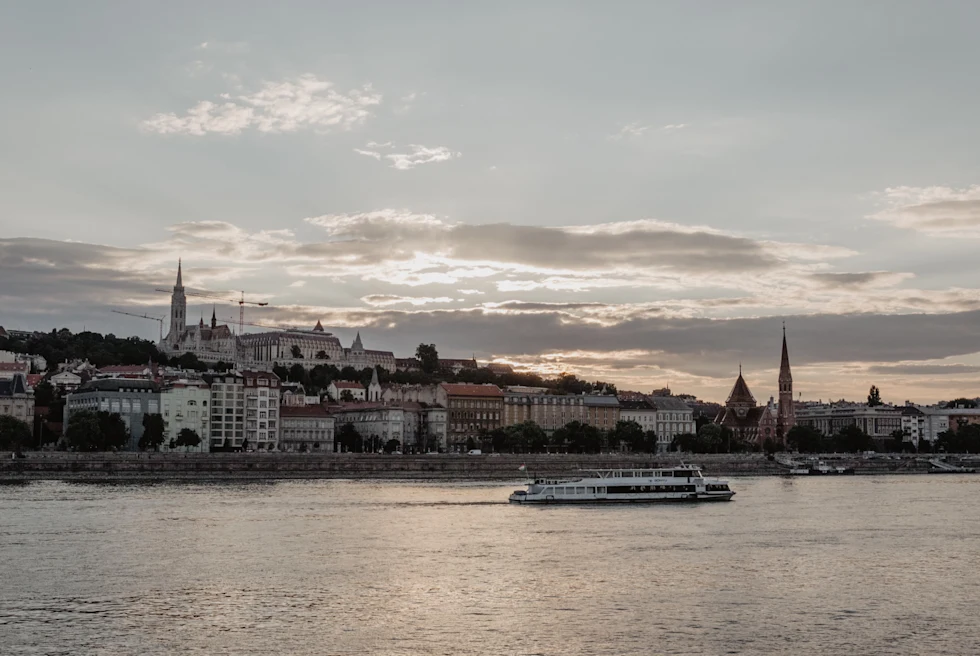
Morning/Afternoon
An approximately hour and a half long train ride will bring you to the Austrian town of Melk. In Melk, you can tour the Melk Abbey, which amazes with the splendor of its architecture, its magnificent soaring library and its setting overlooking the Danube River. From Melk, you will begin an approximately 22-mile river cruise on the Danube River to the town of Krems. Your cruise will take you through the Wachau Valley, which is considered the most beautiful stretch of river in the entire Danube. You will pass medieval castles, hills covered in vineyards, charming villages and picturesque abbeys. If the boat schedule allows for it, you can disembark at one of the charming villages along the route and take a hike up to one of the dramatic castle ruins which still guard the river.
Day 7: Visit to the Schönbrunn Palace and Park & train to Budapest
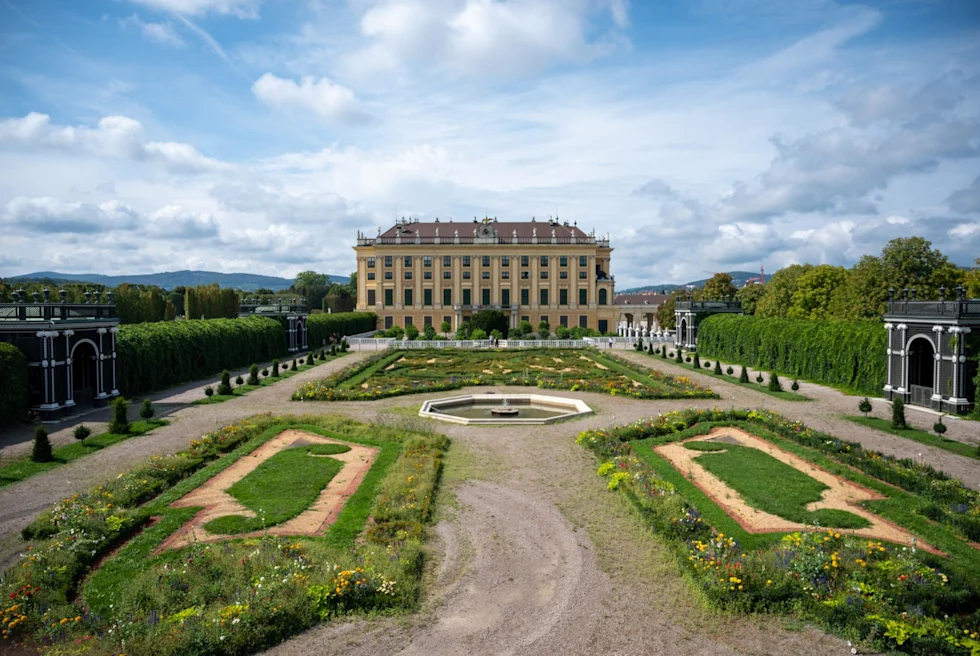
Before leaving Vienna, you have to tour the magnificent palace of Schönbrunn. The palace is most famously associated with Empress Maria Theresa. The name Schönbrunn refers to a string of exceptional pure water found on the site and the imperial family resided in the palace during the summer months when they could take advantage of its serene natural setting. The grounds surrounding the palace form a beautiful park with a mix of formal gardens and woodlands. Throughout the park, you will find enchanting statues and fountains, including a massive fountain of Neptune. If you are interested in a little fun, you can also visit the labyrinth, where you can split up and race to be the first one to find the viewing tower at the center of the maze.
Train to Budapest
The train journey to Budapest is another scenic one and should take about 2 hours and 45 minutes.
Evening
In the year 1800, Pest was a sleepy little town of a few thousand people, still unconnected to the Buda side of the river by a permanent bridge. One hundred years later, Buda and Pest had merged to become Budapest, and most of the city’s nearly one million residents could be found in Pest.
Exploring central Pest today you will encounter grand apartment houses, succession-style, architectural gems and imposing monumental buildings. The focal point of Central Pest is the neo-classical St. Stephen’s Basilica, which dramatically rises above the surrounding city. This striking church is well worth visiting, and you can also take an elevator (600 FT) to the church tower for a magnificent view of the city (otherwise, it’s 302 steps). The nearby Chain Bridge regularly spans the Danube. Completed in 1849, it was the first permanent bridge to connect Buda and Pest and the grandness of its scale and design are quite fitting for a structure that had such a tremendous impact on developing the city. Stop by Café Gerbeaud, which has the ambiance of the old days. Its furnishings and décor remain largely faithful to its origin in 1870 and you can appreciate the surroundings while also enjoying a heavenly slice of cake.
Day 8: Budapest
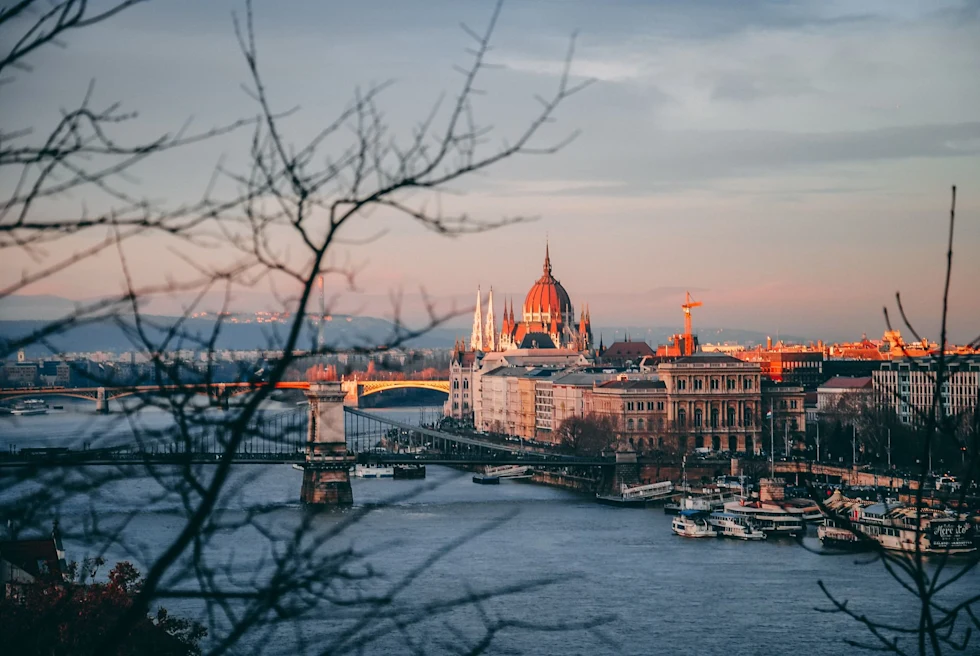
Cultural Culinary Guided Walk in Budapest
It’s fun and delicious to have a real Budapest experience, and this walking tour will provide just that; it’s a real interactive culinary discovery. You will stroll through an old Pest neighborhood and a historic 128-year-old market. You’ll become a market insider as you experience the sights, sounds and flavors that are a part of locals’ everyday lives. You’ll enjoy food tastings from the best specialty food shops, ethnic eateries, local restaurants, as well as an “off-the-beaten-path” glimpse of “Life in Budapest” - the history, culture, architecture and old-fashioned bars that locals frequent. You will also see some of the funnier and stranger things that are considered ordinary snacks in Hungary. You will have a sit-down food tasting at a restaurant, enjoy traditional cakes in a famous patisserie and a 4-tier wine tasting from award-winning winemakers. Be nice to your guide, and you may even learn some authentic recipes passed down by her Hungarian grandmother!
Afternoon: Stroll Along Andrássy Avenue
Andrássy Avenue is Budapest’s most prominent street and a World Heritage Site since 2002. In fact, the avenue was considered so refined and pleasant in the late 19th century that the city’s residents wouldn’t allow an above-ground tram line to be built on the avenue. Andrássy Avenue remains a refined and undeniably impressive thoroughfare. It is lined by imposing neo-Renaissance palaces and buildings, which house luxury stores, stylish 19th-century cafes, theaters, restaurants and other attractions. Several museums are also located on the avenue, including the superb House of Terror Museum, which focuses on the horrors inflicted by totalitarian regimes in the 20th century. I highly recommend a visit to the Terror Museum. It may not be the most fun, but it's definitely a life-changing experience. Andrassy Avenue is also the musical heart of Hungary, as the Hungarian State Opera House stands directly on Andrassy Avenue.
Evening: Visit to the Széchenyi Baths, Városliget Park, the Budapest Zoo, & Heroes’ Square
Széchenyi Baths
Budapest is often called the capital of baths because of its many beautiful baths, all of which are fed by the city’s abundant supply of thermal springs and underground water. The Széchenyi Baths are the largest and the most popular bathing complex among locals and visitors alike. If you’ve seen one of the many pictures of older Hungarian gentlemen playing chess in the open air pools of a grand bath, it was probably taken in the Széchenyi baths. Széchenyi includes eighteen indoor and outdoor pools and also impresses with its grand neo-Baroque architecture.
Városliget Park and the Zoo
The baths are located within the pleasant Városliget Park, which makes a wonderful location for a stroll after your bath. Within the park, you will find the fascinating Vajdahunyad Castle, a complex of buildings created to represent Hungary’s historic architectural styles, such as Romanesque and Gothic. Originally built as a temporary exhibition for the 1896 Hungarian Millennium celebration, the castle proved so popular that it was rebuilt as a permanent attraction. Also located within the park is the delightful Budapest City Zoo. In addition to being a very nice zoo, the zoo also boasts some wonderful art-nouveau architecture.
Heroes’ Square
Where the park meets Andrássy Avenue, you will discover Heroes’ Square, where you can see the city’s largest and most dramatic group of monuments. The monuments of Heroes’ Square were also built for the 1896 Millennium celebration, and they tell a 1,000-year tale of Hungarian history in the form of towering statues of national heroes. You will also find the Museum of Fine Arts, which is well worth a visit for any art lover.
Day 9: Budapest Castle District
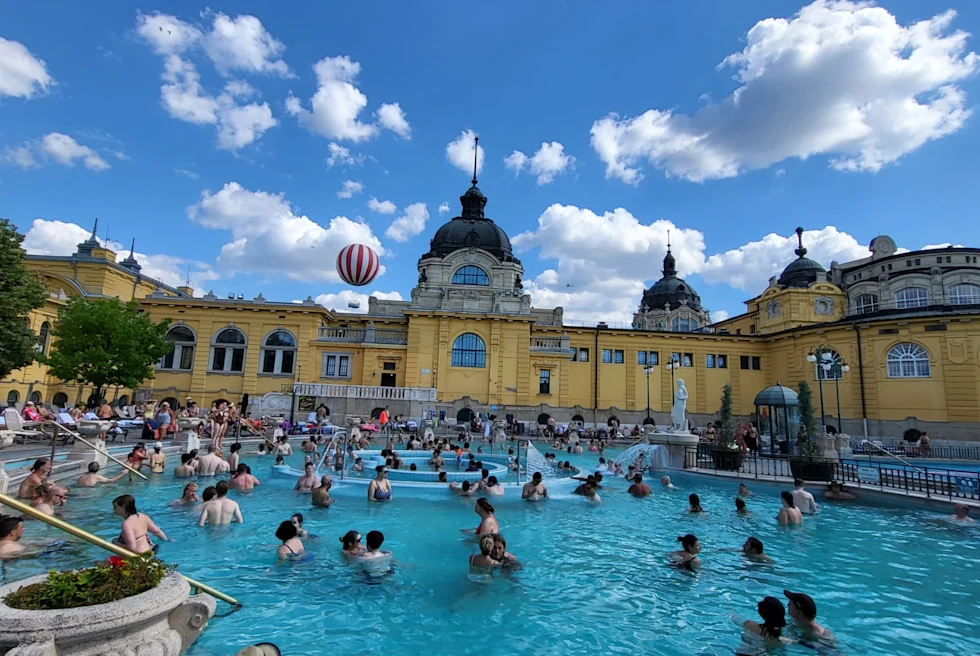
Take this last day to do some additional walking of the Buda side of Budapest. The Buda side of Budapest is dramatically different than the Pest side of the city. While Pest has the vibrancy of a big city, the historic Renaissance and Baroque architecture of Buda’s hilltop Castle District makes it feel more like a quaint step back in time. Indeed, in the little squares and narrow lanes of the Castle District, you will find the heart of historic Hungary. One of the reasons so many different layers of history are found here is because it has been the site of repeated destruction and rebuilding, such as after the liberation of Buda from the Turks in 1686 or the Germans in 1945. In post-World War II reconstruction, destroyed buildings were often reconstructed in the style of the oldest layer of architecture uncovered in the remains. Numerous points in the Castle District provide breathtaking views over the Danube and the Pest side of the city. Especially breathtaking is the view from the neo-Gothic Fisherman's Bastion.
Visit to Gellért and Rudas Baths
Housed within the Art-Nouveau-style Gellért Hotel, the Gellért baths offer a true variety of experiences - such as swimming in the elegant colonnaded main pool, exploring the thermal baths, and swimming in the outdoor pools. There is even a wave pool. The Rudas Baths, meanwhile, date all the way back to 1550 A.D., a period when the Turks ruled Budapest. The Rudas Baths were one of several baths they built in Hungary and it has its historic Ottoman atmosphere and architecture. Relax in the waters beneath the Rudas Baths’ ancient stone cupola.
Visit both or choose one to spend your afternoon relaxing your tired feet. You can even get a massage that may just be the best massage of your life after soaking in the thermal waters! A great way to end a long journey.

Travel Advisor
Alyssa Sharp

Get in touch with Alyssa
Did you like this guide? Reach out to customize and book your own experience. Or, just to chat about travel in general.
You can normally expect a response from Alyssa within a business day or so. You’ll also be subscribed to our travel newsletter (you can unsubscribe at any time).
For more travel tips, check out this guide to Prague by Fora Advisor Cliniece Goodluck's guide, Top Things to Do in Prague, Czech Republic.
This guide is part of our ongoing series on travel to Europe.